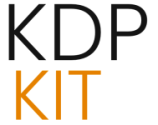The E-Reader Arena: Is a New Champion Ready to Challenge Kindle’s Reign in 2025?

The digital reading landscape is always buzzing with activity, and as of August 2025, the air is thick with anticipation. For years, Amazon’s Kindle has been the undisputed heavyweight champion of e-readers, a household name that practically defined the category for many. But in the fast-paced world of tech, no reign is forever. Whispers in the industry, amplified by insightful reports from outlets like Android Authority, suggest that a new challenger might be gearing up to enter the ring. This potential shake-up promises to bring a fresh wave of innovation and choice to book lovers everywhere.
The Shifting Sands of Digital Reading: A Market in Flux
The digital reading market has seen incredible growth, with the global e-book market alone projected to expand significantly in the coming years. Reports indicate a compound annual growth rate (CAGR) of around 10.7% for the e-book market from 2025 to 2029, showcasing a robust demand for digital content. This expanding market naturally attracts new players eager to carve out their niche. While Amazon’s Kindle currently holds a dominant position, with an estimated 67% market share of e-book sales in the United States, the very success of the Kindle ecosystem also acts as a magnet for competitors looking to offer alternatives. The emergence of new platforms and devices isn’t just about competition; it’s about the evolution of how we access and enjoy stories.
Kindle’s Established Dominance: More Than Just a Device
Amazon’s Kindle has built an empire on more than just its hardware. Its comprehensive ecosystem, which includes a vast digital bookstore, seamless cloud syncing with Whispersync, and the popular Kindle Unlimited subscription service, has cultivated a fiercely loyal user base. For many, the Kindle brand is synonymous with e-reading itself. This strong brand recognition and integrated experience are significant advantages that any new competitor would need to overcome. Amazon’s continued investment in its platform, including rumored new models like the “Kindle Petit Color” with potentially swappable bezels, shows their commitment to staying ahead.
Anticipation of New Market Entrants: A Breath of Fresh Air?
The buzz around a potential new competitor is palpable. Companies like Bookshop.org, known for supporting independent bookstores, are reportedly exploring the hardware space, potentially launching their own e-reader. This move, if it materializes, would align with a broader trend of consumers seeking alternatives that champion different values, such as supporting local businesses. Other players like Kobo and PocketBook continue to offer compelling alternatives, with Kobo gaining traction for its library integration and support for open formats like EPUB. The introduction of a strong new contender could mean more diverse device options, competitive pricing, and a renewed push for technological advancements across the board.
Implications of a New Competitor: What’s in it for Readers?
The prospect of increased competition in the e-reader market is exciting for consumers. Historically, greater competition has always led to better products and more choices. Imagine a scenario where a new device offers a unique feature, like enhanced color display technology or a more open content ecosystem, forcing Amazon to innovate even faster.
Diversification of Consumer Choice: More Options, Better Experiences
A new entrant could bring much-needed diversity to the e-reader market. While Amazon’s Kindle offers a robust experience, it operates within a relatively closed ecosystem. Competitors like Kobo, which integrate seamlessly with library services like OverDrive, offer a different value proposition. The potential for devices that support a wider range of file formats or offer more customization options could appeal to readers who feel constrained by current offerings. This diversification means readers could find devices that better align with their personal preferences, whether that’s for specific hardware features, content accessibility, or even ethical considerations like supporting independent businesses.. Find out more about new kindle competitor android authority.
Potential for Technological Advancements: Pushing the Boundaries of E-Ink
The e-reader market is intrinsically linked to advancements in E Ink technology. E Ink Holdings, a leading manufacturer of e-paper displays, has been at the forefront of innovation, showcasing new color displays and larger formats. A new competitor could drive further investment and development in E Ink technology, leading to faster refresh rates, improved color reproduction, and more energy-efficient panels. This could benefit all e-reader manufacturers and, by extension, all readers. For instance, the development of color E Ink displays, like those found in the Kobo Libra Colour and the Amazon Kindle Colorsoft, is a significant step forward, making graphic novels and magazines more enjoyable on dedicated e-readers.
Current Coverage and Trending Interest: Why the Buzz?
The e-reader sector, while mature, is far from stagnant. Significant developments, like the potential entry of a new major player, naturally attract media attention and generate buzz within the tech community. This heightened interest reflects the evolving nature of reading habits and the increasing importance of the devices that facilitate them.
Media Scrutiny of the E-Reader Sector: Tracking the Next Big Thing
Tech publications and news outlets are closely monitoring the e-reader market. The ongoing discussion about new entrants and technological advancements highlights the sector’s dynamic nature. Journalists and tech enthusiasts are keenly following any news that could disrupt the established order, recognizing the potential impact on consumer choice and industry innovation. This level of scrutiny ensures that developments are widely disseminated, keeping readers informed about the latest trends and potential game-changers.
The Evolution of Reading Habits: Adapting to a Digital World
Our reading habits have undergone a dramatic transformation, with digital content consumption on a steady rise. The convenience, portability, and accessibility offered by e-readers and e-books have made them an integral part of modern life. As more people embrace digital formats, the platforms and devices that enable this consumption become increasingly significant. Any major shift in the e-reader market is seen not just as a product update but as a reflection of broader cultural and technological changes in how we learn, entertain ourselves, and engage with information.
The Evolving Narrative of Amazon Kindle: Adapting to the Future
Despite the growing competition, Amazon’s influence in the digital reading space remains substantial. The company’s robust infrastructure, strong brand loyalty, and continuous investment in the Kindle platform position it as a formidable force. The narrative surrounding Amazon Kindle is one of adaptation and a relentless pursuit of relevance in an ever-changing market.. Find out more about evolving e-reader landscape android authority guide.
Amazon’s Continued Market Influence: A Force to Be Reckoned With
Amazon’s dominance in the e-book market, with a significant share of digital book sales, is undeniable. The company’s vast content library, coupled with services like Kindle Unlimited and Prime Reading, creates a powerful ecosystem that is difficult for competitors to match. Furthermore, Amazon’s ability to leverage its broader retail presence and customer base provides a significant advantage in marketing and sales. Even with new entrants, Amazon’s established infrastructure and brand recognition mean it will likely remain a major player for the foreseeable future.
Adapting to a Changing Market: Amazon’s Strategic Moves
Amazon’s strategy for maintaining its market leadership will undoubtedly involve continuous improvement of its existing offerings and a keen eye on emerging trends. The company is already experimenting with new features, such as AI-powered book summaries (Recaps), though these have faced some user trust concerns. The introduction of color e-readers like the Kindle Colorsoft demonstrates their willingness to innovate and compete in new segments. How Amazon responds to a new, strong competitor will be a critical element of this evolving story, potentially leading to new product features, adjusted pricing strategies, or enhanced marketing efforts to retain its dominant position.
Key Elements of the Developing Story: What to Watch For
As this narrative unfolds, several key elements will determine the success of any new e-reader and its impact on the market. These factors range from the fundamental hardware specifications to the richness of the content ecosystem and the overall user experience.
Device Specifications and Features: The Core Appeal
At the heart of any new e-reader’s appeal will be its hardware. Consumers will scrutinize factors like screen resolution and clarity, the type of E Ink display used (e.g., Carta 1300 for monochrome, Kaleido 3 for color), device weight and ergonomics for comfortable handling, and, of course, battery longevity. Features such as adjustable warm lighting for reduced eye strain, waterproofing for durability, and the inclusion of a stylus for note-taking or annotation could serve as significant differentiators. The recent advancements in E Ink technology, such as larger color displays and improved outdoor readability, will also play a crucial role.
Content Ecosystem and Accessibility: Beyond the Device
Hardware is only one piece of the puzzle; the content library and ecosystem are paramount. A new competitor would need to offer a compelling selection of e-books, potentially through strategic partnerships with publishers or by developing its own content initiatives. Ease of access to purchased content across multiple devices, reliable cloud storage, and the ability to import personal documents are critical considerations for users accustomed to the convenience of digital libraries. For instance, Kobo’s integration with OverDrive for library book borrowing directly on the device is a strong selling point for many readers.
User Interface and Software Experience: Navigating the Digital Page. Find out more about amazon kindle market share trends tips.
The software experience is equally important in shaping a reader’s satisfaction. An intuitive and user-friendly interface, seamless navigation, robust search functionalities, and customizable reading settings can significantly enhance user engagement. Integration with other services, such as audiobook platforms or note-taking applications, could also add considerable value, creating a more comprehensive reading solution. The increasing use of AI for personalized recommendations and book summaries is another area where new entrants might differentiate themselves, although as seen with Amazon’s Recaps, user trust is a key factor.
Pricing Strategies and Market Positioning: Capturing the Reader’s Wallet
The pricing of a new e-reader will be a crucial factor in its market penetration. Whether a new entrant aims for the premium segment with advanced features or targets a more budget-conscious audience will define its initial market positioning. Competitive pricing, bundled offers, or innovative subscription models could all play a role in attracting early adopters and building a customer base. The recent introduction of more affordable color e-readers, like the Kindle Colorsoft, suggests a trend towards making these advanced features more accessible.
Broader Implications for the Digital Reading Industry: A Ripple Effect
The emergence of a new competitor in the e-reader market could have far-reaching implications, influencing not only device manufacturers but also the broader digital publishing landscape and the very technology that powers these devices.
The Future of E-Ink Technology: Driving Innovation
The potential for a new, strong competitor could spur further innovation in E Ink technology itself. Manufacturers of E Ink displays might see increased demand and investment, leading to faster refresh rates, improved color reproduction, or more energy-efficient panels. This could benefit all e-reader manufacturers and, by extension, all readers. As E Ink Holdings declares 2025 its “year of large-size color electronic paper,” the advancements in this technology are poised to benefit the entire market.
Integration with Other Digital Platforms: A Connected Reading Experience
The trend towards integrated digital ecosystems is undeniable. A new e-reader might offer deeper integration with other digital services, such as cloud storage, productivity suites, or social media platforms. This could blur the lines between dedicated reading devices and more versatile digital tools, catering to a user base that values seamless transitions between different digital activities. The ability to easily sync notes, highlights, and reading progress across various devices and platforms will be a key differentiator.
The Role of Open Standards and Interoperability: Breaking Down Walls. Find out more about new e-reader device features comparison strategies.
The success of any new entrant might also hinge on its approach to open standards and interoperability. A device that easily supports various file formats and allows for straightforward content transfer could appeal to users who are wary of vendor lock-in. This could foster a more open and flexible digital publishing environment, empowering readers to access their content on the devices of their choice, regardless of the original source. The focus on open formats and cross-platform compatibility could be a significant draw for consumers looking for greater freedom and control over their digital libraries.
Following the Evolving Story: Staying Informed in 2025
The e-reader market is a dynamic space, and staying informed about its developments is key for any avid reader. As new players emerge and existing ones innovate, understanding the market trends will help you make the best choices for your reading needs.
Continuous Monitoring of Market Developments: Keep Your Finger on the Pulse
As this story continues to evolve, staying informed about the latest announcements, product releases, and expert reviews will be essential. The initial reports are just the beginning, and the true impact of any new competitor will only become clear over time as the market reacts and consumers adopt or reject the new offerings. Keeping an eye on tech news outlets and industry analysis will provide valuable insights into the future of digital reading.
Analyzing Consumer Reception and Feedback: The Voice of the Reader
Consumer reception will be the ultimate arbiter of success. Early reviews, user feedback on forums and social media, and sales figures will provide valuable insights into how well a new e-reader meets user expectations and addresses existing market gaps. Understanding these reactions is key to grasping the full scope of this developing narrative and predicting which devices will stand the test of time. The “Kindle-Tok” trend on TikTok, for example, shows how social media can significantly influence consumer sentiment and product adoption.
Anticipating Future Market Dynamics: The Road Ahead
The emergence of a new competitor is more than just a single product launch; it’s a signal of the ongoing dynamism within the digital reading industry. It suggests that the market is ripe for disruption and that innovation remains a critical driver of growth. The implications extend beyond Amazon Kindle, influencing the strategies of all players in the e-reader and digital content space. As the market continues to grow, projected to reach $11.29 billion by 2030, the competition is likely to intensify, benefiting readers with even more advanced and accessible devices.
So, what are your thoughts on the evolving e-reader landscape? Are you excited about the prospect of new competitors challenging Kindle’s dominance? Share your opinions in the comments below – we’d love to hear from you!








